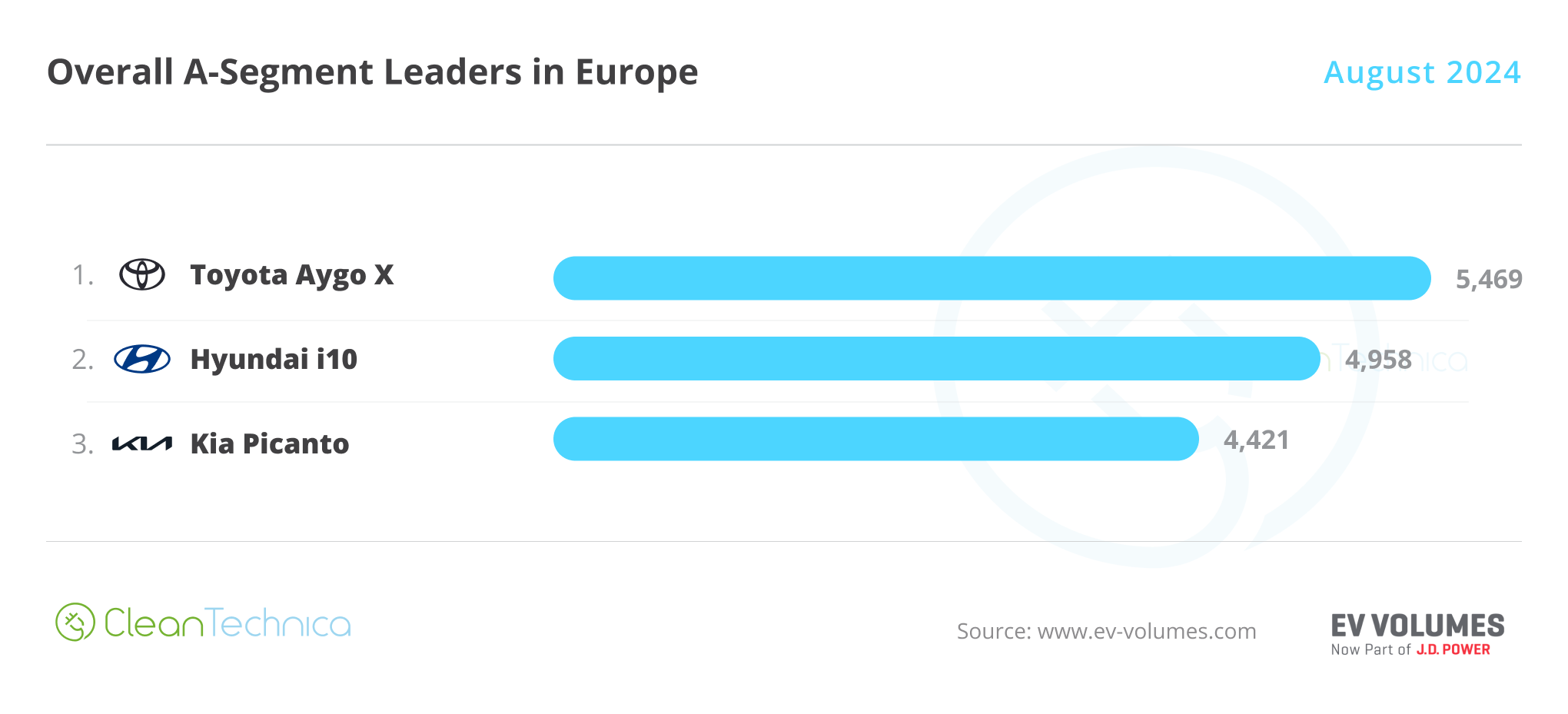Sign up for daily news updates from CleanTechnica on email. Or follow us on Google News!
This is a tale of two US automakers — Ford and General Motors. When the EV revolution — sparked by the early success of Tesla — was getting started, Ford was first out of the gate with big plans. It said it would build a new manufacturing campus called Blue Oval City in Tennessee that would focus on bringing electric vehicles to market. It introduced the Mustang Mach-E, a battery powered SUV built in Mexico that was so successful Ford had to increase its production targets. It was one of the first US companies to offer a battery powered work van, and it stunned the automotive world with a video of an all-electric version of the iconic F-150 towing one million pounds of railroad cars.
That was pretty heady stuff and made it seem as though Ford was the clear leader in the EV segment among legacy US automakers. But a funny thing happened on the way to the EV future. Sales plateaued. Dealers told the company to take its electric car requirements and shove them. The company reported this week that it lost $1.2 billion in its EV business before interest and taxes from July to September. In the first nine months of the year, it lost $3.7 billion. Ford’s chief financial officer, John Lawler, said it was a “solid quarter,” noting that revenue had risen for the 10th quarter in a row to $46.2 billion. But the company’s overall profit of $896 million in the third quarter was down 24 percent from a year earlier, largely because of problems with electric vehicles, warranty costs, and other factors.
Recently, Autoblog reported that Ford had begun using Retail Replenishment Centers which are dedicated to holding inventory. This can reduce dealer costs because they often have to start paying financing charges as soon as new vehicles are delivered to dealer lots. According to a new memo, Ford is offering its dealers up to $1,000 per unit when they restock their F-150 Lightning inventory via a Retail Replacement Center, but that figure goes up to $1,500 per vehicle when the dealer orders nine or more units, up to a maximum of 15. That’s a total of $22,500 available to dealers if they order more of the trucks for their inventory.
A report by CNBC says production of the F-150 Lightning is being halted for the rest of this year in an attempt to clear some of the backlog in dealer inventory. On October 31, Ford confirmed the 7-week shutdown would occur at its Rouge Electric Vehicle Center in suburban Detroit from November 18 until January 6. 2025. “We continue to adjust production for an optimal mix of sales growth and profitability,” Ford said in an emailed statement. Sales of the F-150 Lightning are up 86% this year, but the company is losing money on every one it sells. It has said previously its next generation EVs will be less costly and that it will not launch a new battery electric vehicle unless it can be profitable within a year.
Ford has been working to streamline its electric vehicle operations. Lawler said its electric vehicle division had reduced costs by $1 billion this year. Soon, LG Energy Solution will start making batteries for the Mustang Mach-E in Michigan, which will make that vehicle eligible for the federal tax credit for all customers, not just those who choose to lease. Ford is also building two battery factories in conjunction with SK — one in Kentucky and another in Tennessee.
In addition, Ford promises that a new pickup truck set to go into production in the near future will be more appealing and cost less. It also has an engineering group in California, which CEO Jim Farley calls “the skunk works,” that is focused on the development of affordable battery electric models. “We have learned a tremendous amount from consumers,” Mr. Lawler said. “Most of our competitors are launching their first-generation vehicles. We are moving into our second generation.”
Things Are Different At GM
The New York Times compares Ford and GM to the childhood fable of the tortoise and the hare. Ford got off to a fast start but GM has spent the last few years perfecting its electric car platforms and harmonizing its battery supply. Ford uses different batteries for its different electric vehicles while GM is focused on using the same battery architecture for many vehicles, from the entry-level Bolt to the Hummer EV.
GM executives say the company is close to breaking even on its electric cars. Last week, GM reported a $3 billion profit for the third quarter, about the same as a year earlier. Its full year earnings are likely to approach or surpass $10 billion, which could set a record. “We’re making substantial progress on our EV journey toward profitability,” its chief financial officer, Paul Jacobson, said in a conference call last week.
The go-slow approach seems to be paying off, the New York Times says. The first GM battery factory in Warren, Ohio, struggled to get going but is now operating at about 80 percent of its capacity, Jacobson said. A second battery plant near Nashville is at 40 percent and rising. “Every cell that is produced is cheaper under our joint venture arrangement. That’s beginning to bring pretty significant benefits,” he said. GM has introduced nine electric models using similar batteries, appealing to a wide range of consumers in the process. Several more are on the way, including an all-electric version of the Cadillac Escalade. “GM seems to have figured out a way to put out lower cost, high efficiency EVs,” Mike Ramsey, a Gartner analyst, told the New York Times.
In the third quarter, GM sold more than 32,000 electric vehicles in the United States, about 8,600 more than Ford, according to Kelley Blue Book. Chevrolet has recently begun selling the Equinox EV, which has a starting sticker price of $35,000. It is eligible for the $7,500 federal EV tax credit, which the Mustang Mach-E is not because Ford sources many of its batteries from outside the US. However, note that customers can take advantage of a lower lease rate because of a quirk in the Treasury regulations that implement that tax credit, which was created by the Inflation Reduction Act in 2022.
Like the legendary hare, Ford was fast out of the gate while GM dawdled along like the tortoise, choosing to begin its adventures in electric car manufacturing with the entry level Chevy Bolt, which was treated to many upgrades between model years. It appears the Bolt was basically the test mule for GM’s electric car ambitions and that the company is now leveraging what it learned from the Bolt to inform its EV strategy and technology going forward.
Both companies have the luxury of hiding behind the tariff wall the Biden administration has built around the domestic car industry in the US — a 100 percent levy on Chinese made electric vehicles. Whether that protection will give both Ford and GM the time they need to become competitive if those tariffs are reduced is really the most important question for the industry at the present. If they were forced to compete now with electric cars costing $20,000, chances are both would face economic extinction in a relatively short period of time. Extending the metaphor, both the hare and the tortoise would be gobbled up by the 800-pound gorilla.

Chip in a few dollars a month to help support independent cleantech coverage that helps to accelerate the cleantech revolution!
Have a tip for CleanTechnica? Want to advertise? Want to suggest a guest for our CleanTech Talk podcast? Contact us here.
Sign up for our daily newsletter for 15 new cleantech stories a day. Or sign up for our weekly one if daily is too frequent.
CleanTechnica uses affiliate links. See our policy here.
CleanTechnica’s Comment Policy




